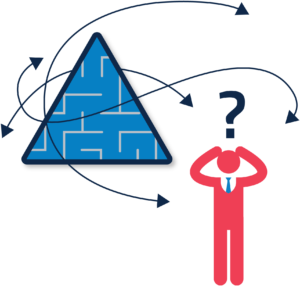Tame Your Pricing Complexity
Tame Your Pricing Complexity
Are you operating within a complex pricing environment?
For many wholesale distribution and manufacturing companies, pricing can become complex very quickly. Consider the distributor with 8,000 SKUs. Setting prices that will sell the most number of units AND deliver the maximum margin is a real challenge. Now consider that this distributor has over 1,500 customers and five different markets. This combination can result in as many as 60 million price permutations.

How do you even begin to manage such complexity?
First, think about grouping transactions with similar features. For example, group together similar customers in identical markets for the same SKU. Consider the industrial distributor with roller bearing SKU number 6789. This SKU may be sold to a variety of different markets including automotive, oil and gas, or even aerospace. Each of these markets will likely have a different levels of willingness to pay. So, when pricing this SKU for the aerospace market, we will reference historical transactions in the aerospace market.
Additionally, different customers have different levels of willingness to pay. Large customers with strong buying power may demand lower prices than smaller customers with less buying power. A variety of other [customer-specific price drivers exist as well. The key is to group like customers and base future pricing on an analysis of the historical pricing among these peers.
With 60 million possible permutations, it becomes difficult, if not impossible, to manage prices using just human intellect or even spreadsheets. So the practice many distributors rely upon – entrusting their sales teams to set prices based on margin targets – is problematic. Individual sales reps do not have access to the collective pricing wisdom or experience of the entire sales team. For example, a high-volume SKU may be quoted hundreds of times throughout the year by the entire sales team, but each individual rep may have only his or her own experience to rely upon. The result is a broad range of prices among transactions with similar characteristics.
Enter technology.
The solution to managing price complexity is the adoption of pricing technology that leverages company-wide historical pricing data to set optimum prices on a sale-by-sale basis. Pricing engines analyze data taken from invoices and calculate optimized prices for each transaction. The end result is higher sales close rates and improved margins. Forward-thinking companies with complex pricing situations are increasingly discovering that this type of technology has the potential to transform their financial picture.
There is a great deal more behind this pricing science. For a more comprehensive overview, call PricePoint Partners and speak with a pricing consultant about how pricing technology could benefit your business.
Schedule A Free Pricing Consultation
Fill Out The Form Below To Set Up A No Cost, No Obligation Video Conference Call With One Of Our Experienced Pricing Consultants.
"*" indicates required fields
